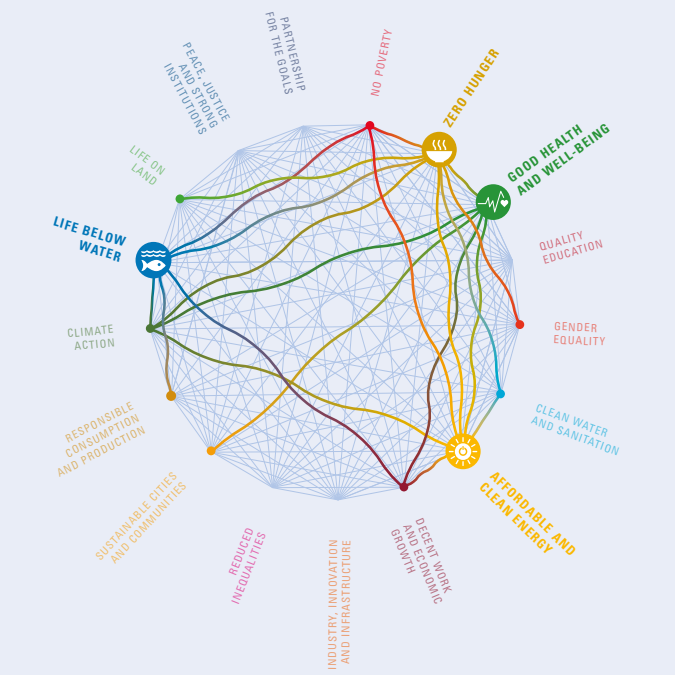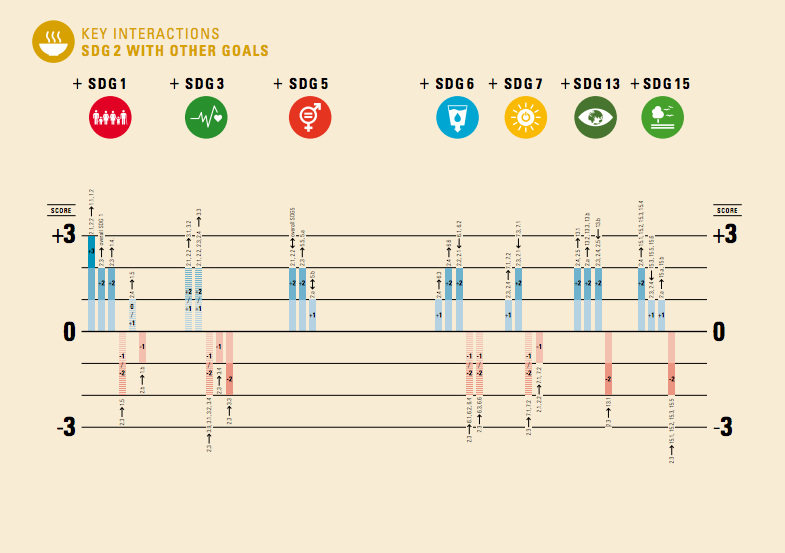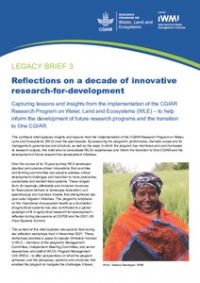The latest United Nations population projections released in June 2017 suggest that there will be 9.8 billion people by 2050, an increase of 2.4 billion people over 2015 estimates. That means that our population is growing faster than the last several rounds of UN projections for 2050 suggested. This growth will be concentrated in the so-called Least Developed Countries (LDCs) and the African continent, but the number of people in India, Indonesia, Pakistan and the United States is also expected to increase.
This projected population growth both heightens the need for the Sustainable Development Goals while simultaneously making them more difficult to achieve. The locations where population growth is likely to happen are also areas subject to increased exposure to climate extremes, civil conflicts, high levels of natural resource degradation and poor infrastructure development. Government resources in the poorest countries experiencing rapid population growth will be most constrained and basic needs, including food security and nutrition, are in peril. The FAO confirmed at their biennial conference in July that, currently, 19 countries are facing severe food crises due to a combination of conflict and climate change.
How can strong, positive progress on the SDGs be made under these daunting circumstances? A new report by the International Council for Science (ICSU), titled A Guide to SDG Interactions: From Science to Implementation, will be presented during the July 10-19 session of the High-level Political Forum on Sustainable Development (HLPF) at the United Nations in New York and provides some useful answers.

How do the 17 SDGs interact with one another?
By design, the goals and targets are an integrated set of global priorities and objectives that are fundamentally interdependent. Can governments save scarce resources by ensuring that synergistic relations between targets and goals are exploited, while avoiding constraining interactions? You bet! Using a 7-point scale, the report describes the results of an assessment of the key target-level interactions between SDG2 on food, SDG3 on health, SDG7 on energy and SDG14 on oceans with the other goals, based on scientific literature and expert analysis. The assessment identified 316 target-level interactions across these four goals, of which 238 are positive, 66 are negative, and 12 are neutral.
For example, investing in food security enables and reinforces the poverty goal (SDG1), since enhanced food and nutrition security are essential to reduce poverty and eradicate extreme poverty. Supporting small-scale food producers can also lead to substantial poverty reduction, as rural people constitute the largest segment of the world’s ultra-poor. Similarly, progress on SDG2 can also reinforce the health goal since providing vulnerable populations with sufficient, safe and nutritious food contributes to reduced maternal mortality and preventable deaths of newborns and children under 5 years of age. Food and nutrition security and stable agricultural employment have even been proven to help reduce epidemics of communicable diseases such as HIV/AIDS, malaria, and tuberculosis.
But not all interactions are reinforcing. Investments focused on food security might end up constraining progress in poverty alleviation, health, water security and other goals.
For example, sustainable agriculture as envisioned in SDG2 should help maintain ecosystems and progressively improve soil and land quality, thereby improving water quality and quantity and increasing agricultural productivity. However, this can limit access to safe drinking water and adequate and equitable sanitation, which, in turn, can increase the number of people affected by water scarcity and pollution.

Accounting for conflicts and taking advantage of overlaps
Importantly, as policymakers and investors learn about the tradeoffs presented in the report and identify those in their own work, they can make corrective changes during investment design and can focus monitoring on those linkages that are most constraining.
A careful assessment of synergies and constraints between various targets of a single SDG is also needed. Tradeoffs within SDG2 targets can occur, for example, between targets for agricultural production and nutrition; an increase in production and affordability of low-nutrient and energy-rich foods can contribute to macro and micronutrient deficiencies. In addition, trade-offs may arise if rural infrastructure development does not address the needs of smallholder food producers or biodiversity.
Understanding the range of positive and negative interactions among the SDGs is key to unlocking their full potential at any scale; otherwise progress made in one area may come at the expense of progress in others. LDCs, which are most constrained in their ability to meet the SDGs, have the most to gain from taking advantage of synergies and identifying constraints.
How can we ensure that all countries and individuals benefit?
Here are a few suggested next steps to help unlock the full potential of synergistic SDG achievements:
- Each country should convene people with a wide range of expertise to identify the interactions between the 17 SDGs specific to their local conditions. This will help governments prioritize investments, and create a common language and approach across sectors, fostering cross-sector collaboration.
- Existing institutions and actors and their capacity to achieve progress on key nationally identified SDGs should be identified. This will help determine strengths and gaps that need to be filled, or at least monitored. It will also help identify which SDGs to focus on in order to support multiple goals and targets where synergies are particularly strong.
- Develop cross-cutting coordination mechanisms to allocate resources, share data and information, facilitate research and innovation, and build capacity.
- Apply a similar integrated perspective to monitoring, evaluation, and review, focused on areas of potential tradeoffs.
- Start or join a movement that encourages cross-sectoral collaboration to address the SDGs in which progress will be most challenging to achieve. What is most challenging will vary depending on the country, and even the location within countries. Several such movements have already been started, and include interdisciplinary research efforts, such as the one that generated through the ICSU report.
Claudia Ringler of IFPRI and CGIAR WLE, and Ludovic Mollier, Frédérique Seyler and Jean-Luc Chotte of IRD, contributed to the SDG2 analysis in the ICSU report. Read the report.






/index.jpg?itok=EzuBHOXY&c=feafd7f5ab7d60c363652d23929d0aee)










